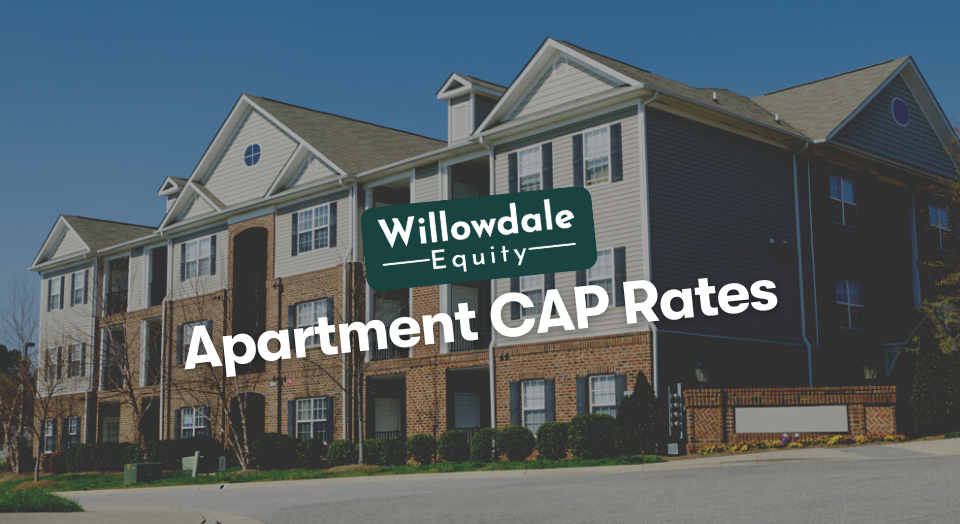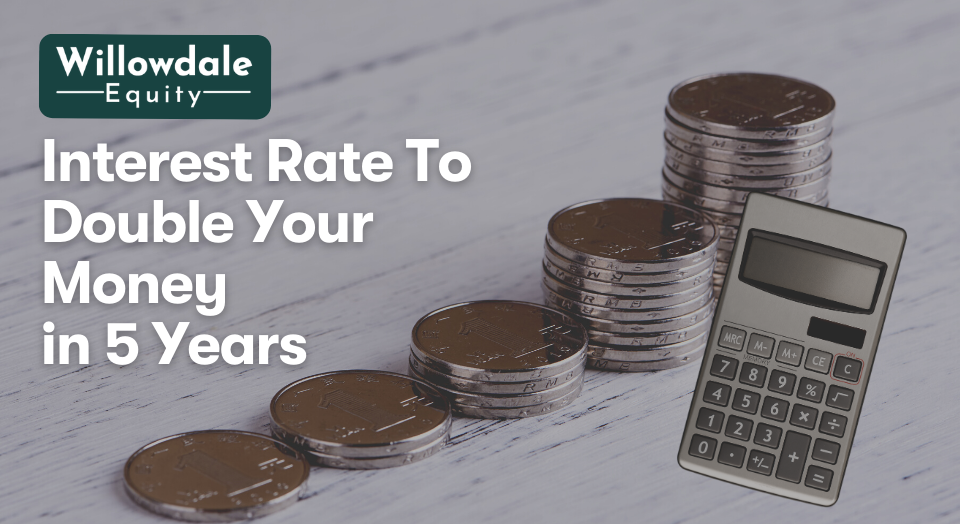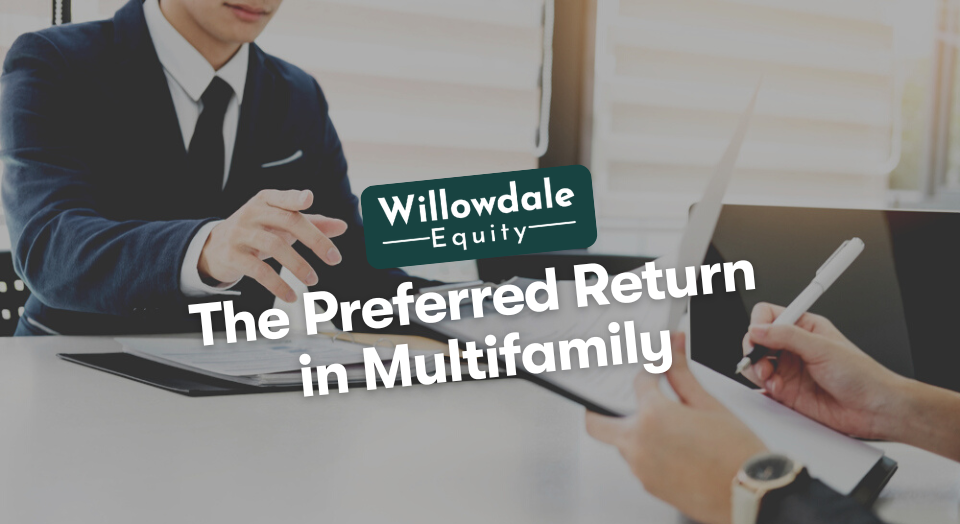
What is CAP Rate for Apartments?
This article is part of our guide on what a good cap rate is for multifamily, available here.
Apartments communities are some of the best-performing assets to safeguard investors’ financial future.
What is one of the tools to determine the viability of a prospective apartment deal and its current and future property value? The cap rate. Understanding the significance of cap rates in analyzing a potential acquisition is essential to your investing success.
In this article, we’ll cover everything you need to know about cap rates for apartment buildings, how to calculate it for apartments, the average cap rates for apartments in the U.S., and much more.
Key Takeaways
-
Cap rates tell us the yield we expect post-acquisition of a property and how to value an apartment community. Commercial and apartment investors utilize the cap rate to determine the projected rate of return from an investment in real estate.
-
The cap rate formula for apartment investing is the following: CAP Rate = NOI/Purchase Price
-
Buyers of apartments seek yield, which is why it’s important to note that an apartment building value is not appraised similarly to a single-family home.
-
While apartments are valued largely on the yield or cash flow relative to the investment, single-family homes are priced based on the comparable approach.
What is a CAP Rate in Apartment Investing?
If you’re new to real estate investment, you should know that a cap rate is one of the key metrics we use to project the day-one cash flow from an apartment building.
Property investors need to know this information to assess whether they are achieving their target ROI and cash flow projections. Cap rates tell us the yield we expect post-acquisition of a property and how to value an apartment community.
Commercial and apartment investors utilize the cap rate to determine the projected rate of return from an investment in real estate. This rate is calculated by taking the property’s net operating income and dividing it by the current market value of the specific investment property, which is presented as a percentage. Before investing money in real estate, investors utilize the cap rate to estimate their future return on investment.
Many would contend that in apartment investing, the cap rate is even more significant than the net operating income and the purchase price. The calculation of the cap rate for apartments is discussed next.
How to Calculate CAP Rate for Apartments
Simply dividing a property’s net operating income (NOI) by its acquisition price yields its cap rate.
Here is the cap rate formula for apartment investing:
CAP Rate = NOI/Purchase Price
For Example; If an apartment building’s NOI is $1,000,000 and the acquisition price is $17,000,000, the cap rate is calculated as follows: $1,000,000/$17,000,000 = 5.88%.
Cap rates can range from 4 to 10 percent for apartment buildings, depending on the stage of the market cycle, the region, the property’s condition, and the alignment between supply and demand in a particular area.
Generally speaking, you want to see a higher cap rate in locations with lower demand for rental properties, but every scenario is unique. Cap rates are crucial, but they shouldn’t be the only factor determining whether an investment will succeed or fail; instead, you should consider them in the context of the whole picture.
Let’s now look at why calculating apartment cap rates is essential.
The Importance of Apartment CAP Rates
A 5.88% cap rate, the cap rate we calculated in our example, might be acceptable in your location but not in others. Nevertheless, the cap rate is an important indicator to consider when evaluating an investment because it offers some perspective on the future.
Buyers of apartments seek yield, which is why it’s important to note that an apartment building value is not appraised similarly to a single-family home. While apartments are valued largely on the yield or cash flow relative to the investment, single-family homes are priced based on the comparable approach. This means that value is derived from nearby comparable properties or like-kind and high-quality surrounding residences recently sold.
So, what would be a reasonable cap rate for an apartment building you have your eyes on? The average cap rates for apartments in the U.S. are a good reference point.
What is the Average CAP Rate for Apartments U.S. Wide?

The average capitalization rate for apartment complexes sold in the U.S. is around 4.59 percent. Cap rates have compressed over the years, which means that values have exploded because a lower cap rate means each dollar of net operating income (NOI) is worth more in value.
Knowing the median cap rate for the entire country helps give you an idea or range of where apartments are trading for U.S. wide. It’s important to note that these are averages, and some of the data can be slightly skewed due to some anomaly sales of some apartment complexes. This is why understating the market cap rate for the particular market you’re investing in or plan to is paramount.
Most research studies include the average capitalization rate for all apartment complexes sold in a city during the previous three months, six months, or a year.
We understand that a brand-new apartment complex in the most desirable part of town should be valued more than an older one in a less desirable part of town. Therefore the cap rate that the building is valued on for both of those assets would be different.
Each market has a market cap rate for a particular type of apartment class in that area, but ultimately the market cap is looked at on a case-by-case basis. It is the reason a reasonable cap rate for an apartment building will vary based on location and other factors.
What is a Good CAP Rate for Apartments?
High median income areas in major metro areas with the best living standards and lower crime are often referred to as A or B+ class areas. These areas are likely to have a low cap rate of 3 to 5 percent.
Medium-income neighborhoods with modest crime rates and an average standard of living are often referred to as B- or C+ class areas. These areas will likely have a moderate cap rate of 5 to 7 percent.
Low-income locations with high crime rates and an inadequate standard of living are often referred to as C- or D-class areas. These areas will likely have a high cap rate of 7 to 10 percent.
So, is it better to have a higher or lower apartment building cap rate? We reveal that in the next section.
Good Read: What is Gross Potential Rental Income
Is it Better to Have a Higher or Lower Apartment Building CAP Rate?

It’s all up to your personal investment goals, investment horizon, and risk profile. Cap rates are primarily a derivative of security. The lower the cap, the more secure the asset is and the more growth potential. The higher the cap, the less desirable the asset and market may be, which is why you can command a higher return on day one to offset the additional risk.
Also, as a seller, you love low cap rates because it means you will get more value per dollar that your rental property generates, but as a buyer, you might like a slightly higher cap rate to get a better yield on cash day one.
Another essential thing that commercial real estate investors looking to invest in apartment buildings must consider is why cap rates for apartments have compressed so much.
Why Have CAP Rates for Apartments Compressed So Much?
Through a process known as capitalization rate compression, geographic, economic, and market considerations may drive the cap rate lower. Apartments are viewed market-wide as a great store of capital and hedge well against risk costs and economic turmoil.
Also, finding risk-adjusted yield has become harder and harder to come by; as a result, assets like apartments become further in high demand, driving up asset values which is a result of cap rate compression.
Frequently Asked Questions about what is a CAP Rate on an Apartment Building
A rental cap rate determines how much yield you will receive on day 1 of acquiring a property all cash.
If the buyer were to pay all cash for a property with no mortgage to service, they would get a 7 percent return annually on their invested capital.
What is CAP Rate for Apartments- Conclusion
The geographic location of an apartment building and the state of the economy significantly impact cap rates. Before diving deeper into the rent roll and the previous year’s operating expenses, use it as a concise picture to get an overview of the property. It will give you a general idea of how the property operates and how long it will take to recoup your entire investment if you make a complete cash purchase.
Join the Investors Club here at Willowdale Equity to learn more about cap rates for apartment buildings and how you can use them to make a sound investment decision to get the most return for your next investment.
Sources:
- CBRE.US, “National Multifamily Cap Rate Report“
Interested In Learning More About PASSIVE Real Estate Investing In Multifamily Properties?
Get Access to the FREE 5 Day PASSIVE Real Estate Investing Crash Course.
In this video crash course, you’ll learn everything you need to know from A to Z
about passive investing in multifamily real estate.
We’ll cover topics like earned income vs passive income, the tax advantages, why multifamily, inflation, how syndications work, and much much more!




